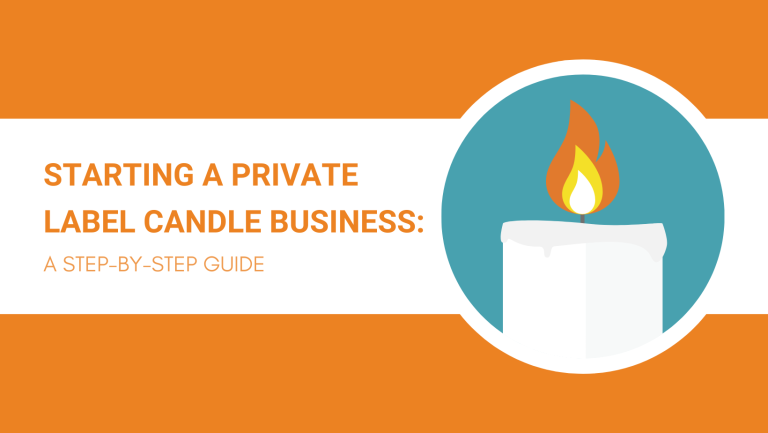Starting a private label candle business can be a lucrative venture in today’s market. The candle industry is booming, with global sales projected to reach $13.72 billion by 2026.
By creating your own unique brand of candles, you can tap into this growing market and build a successful business from the comfort of your home.
Private label candle businesses offer entrepreneurs the opportunity to create custom products without the need for extensive manufacturing knowledge or equipment.
You can work with established manufacturers to produce candles that align with your brand vision, allowing you to focus on marketing and sales.
This guide will walk you through the essential steps to launch your own private label candle business, from choosing your niche to scaling your operations. We’ll cover everything you need to know to get started and set yourself up for success in this exciting industry.
Let’s dive in!
Key Takeaways
- Private label candle businesses allow you to create custom products without extensive manufacturing knowledge.
- Choose a niche and target audience to differentiate your brand in the competitive candle market.
- Focus on branding, product sourcing, and marketing to build a successful private label candle business.
What Is a Private Label Candle Business?

A private label candle business allows you to sell candles under your own brand without manufacturing them yourself. You partner with a supplier who produces candles to your specifications.
This model lets you focus on branding, marketing, and sales while leaving production to experts. Private label candles are a subset of wholesale, where you buy in bulk at discounted prices.
Your unique label and packaging go on the candles, making them distinctly yours. This approach saves you the hefty costs of setting up a manufacturing facility.
Private labeling offers several advantages:
- Lower startup costs
- Faster time to market
- Flexibility in product range
- Focus on brand building
You can start a candle business with minimal investment this way. It’s an attractive option for entrepreneurs looking to enter the lucrative candle market quickly.
Remember, while you don’t make the candles, you control the brand identity. Your creativity in scent selection, packaging design, and marketing sets you apart in this competitive field.
Types of Candles to Brand
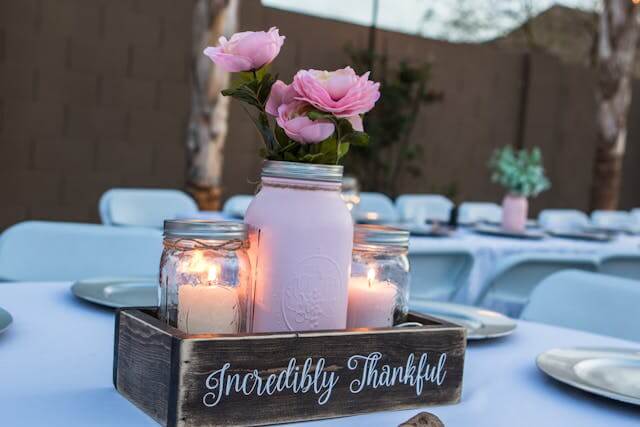
Some of the most popular and well-sold candle types you can private label are:
- Soy candles (made of soy wax)
- A scented candle (with essential oil)
- Vegan candles
- Decorative candles (in different shapes)
- Hand-poured candles
- High-quality luxury candles
- Wood wick candles
- Metal tin candles
- Mason jar candles
- Long burning time candles
- Tea light candles
- Paraffin candles
- Personalized candles
These are just a fraction of the many different candle types you can sell. The sky is your limit in this product category.
Why Start a Candle Business?
Starting a private label candle business offers numerous advantages:
Constant Demand
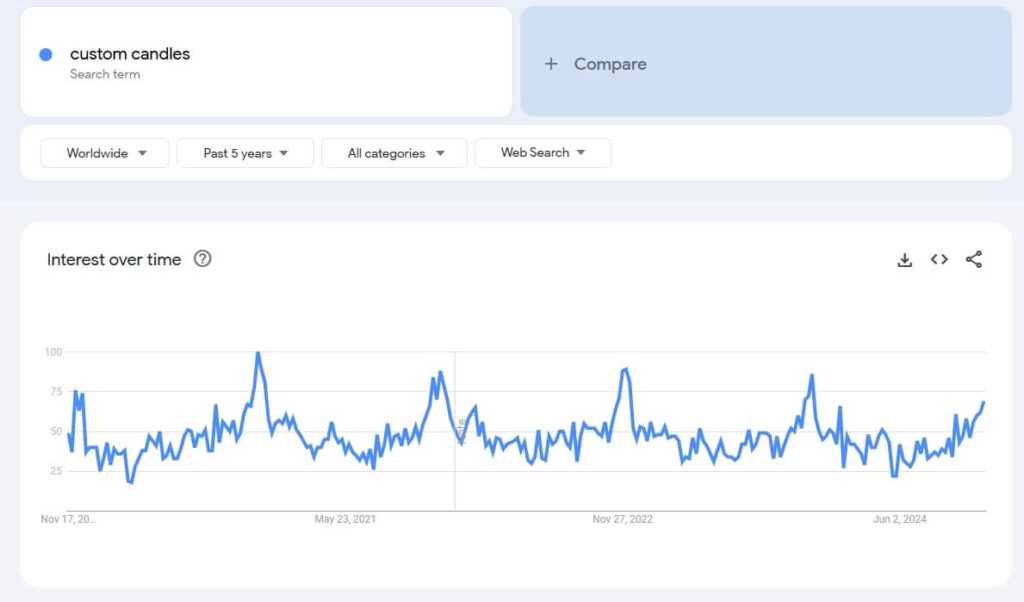
Did you know that over 80% of US households use candles? We’re talking about a popular product that’s in demand throughout the entire year. Plus, it’s projected to grow steadily during the next several years.
Candles remain a staple in homes and businesses worldwide. People buy candles for various reasons:
- Home decor and ambiance creation
- Aromatherapy and relaxation
- Gift-giving for special occasions
- Religious and cultural practices
This diverse range of uses ensures a steady customer base. Seasonal peaks, like winter holidays, further boost sales. You can also target niche markets, such as eco-friendly or luxury candle segments, to capture specific consumer groups.
Easy to Customize
Candles offer endless customization possibilities. You can tailor your products to match current trends or create unique offerings. Key areas for customization include:
- Scents: From floral to woody, the options are limitless
- Containers: Glass jars, tins, or eco-friendly materials
- Wax types: Soy, beeswax, paraffin, or blends
- Colors and designs: Solid colors, patterns, or artistic creations
- Labels and packaging: Reflect your brand identity
This flexibility allows you to stand out in the market. You can easily adapt your product line to meet changing consumer preferences or target specific demographics.
Multiple Sourcing Options

You have various options for sourcing your candles:
- Local manufacturers: Support local businesses and ensure quality control
- International suppliers: Often more cost-effective for larger orders
- DIY production: Full control over the process, ideal for small batches
Each option has its pros and cons.
Local sourcing may offer faster turnaround times and easier communication. International suppliers might provide lower costs but require longer lead times. DIY production gives you complete control but demands more time and effort.
Consider factors like order volume, quality standards, and your budget when choosing a sourcing method. You can also mix approaches as your business grows.
Low-Cost Entry

Starting a candle business is relatively affordable compared to many other ventures. Initial investments can be minimal, especially if you start small. Key startup costs include:
- Raw materials (wax, wicks, fragrances)
- Basic equipment (melting pot, thermometer, molds)
- Packaging and labeling supplies
- Website or e-commerce platform fees
You can begin with a home-based operation to keep overhead low. As your business grows, you can reinvest profits to scale up production and expand your product line.
Great for Marketing
Candles lend themselves well to creative marketing strategies. Visual appeal is crucial in this industry, making social media platforms ideal for promotion. Consider these marketing approaches:
- Instagram: Showcase your candles in aesthetic settings
- Pinterest: Create boards with home decor inspiration featuring your products
- Influencer collaborations: Partner with lifestyle bloggers or home decor enthusiasts
- Seasonal campaigns: Align marketing efforts with holidays and changing seasons
Storytelling around your brand and products can create emotional connections with customers. Highlight unique selling points like eco-friendly ingredients or support for local artisans to differentiate your brand in the market.
How to Start a Candle Business: A Step-by-Step Guide
Now, we’ll break apart all the steps of launching your first candle business effortlessly. Here’s what a good candle business plan looks like:
Step 1: Choose Your Tier
When starting a private label candle business, you’ll need to decide which market segment to target. There are three main tiers in the candle industry:
- Mass candles
- Mid-range candles
- Luxury premium candles
Mass candles are typically priced under $10 and sold in large retail chains. They appeal to budget-conscious consumers looking for affordable options.
Mid-range candles fall in the $10-$30 price range. These target middle-income consumers who want quality products without breaking the bank.
Luxury premium candles are priced above $30 and cater to high-end customers seeking unique, artisanal products. These candles often feature premium ingredients and sophisticated packaging.
Your choice of tier will impact your entire business strategy. It determines your production costs, profit margins, and target audience. For example, if you choose the luxury tier, you’ll need to invest in high-quality ingredients and elegant packaging.
Consider your resources and expertise when selecting a tier. Mass candles require larger production volumes, while luxury candles demand attention to detail and craftsmanship.
Research your local market to identify gaps and opportunities. You might find an underserved niche that aligns with your skills and interests.
Remember, you can always adjust your strategy as your business grows. Many successful candle companies start in one tier and expand into others over time.
Step 2: Choose Your Niche

Selecting a niche is crucial for your private label candle business. It helps you stand out in a crowded market and attract specific customers.
Consider eco-friendly candles as a niche. With 71% of consumers preferring eco-friendly options, this market is growing rapidly. You could use soy wax or beeswax and natural fragrances to appeal to environmentally conscious buyers.
Aromatherapy candles offer another promising niche. These candles can help reduce stress and improve mood. Popular scents include lavender for relaxation and citrus for energy.
Holiday-themed candles present a seasonal opportunity. Think beyond Christmas to include candles for Valentine’s Day, Halloween, or even niche holidays like National Donut Day.
Here are some other niches to consider:
- Luxury candles with high-end packaging
- Pet odor-eliminating candles
- Book-inspired scents for bibliophiles
- Decorative container candles
Remember, your niche should align with your interests and target audience. Research market trends and analyze your competition to find a unique angle that sets your candles apart.
Once you’ve chosen your niche, you can tailor your branding, packaging, and marketing strategies to appeal directly to your target customers.
Step 3: Define Your Audience
Next, you’ll have to define your target audience and design your ideal buyer personas. The more in-depth you do this, the clearer your target buyer will become, and the easier it will be to reach and sell to them.
Ask yourself:
- Who is your ideal buyer?
- Who would like your candles?
- Can you reach one or multiple audiences?
- What is your audience demographic (age, gender, location, behavior, etc.)
- What drives the buyer to make a purchase?
- What are the values you stand for?
Use tools like Google Analytics to gather data on potential customers. Look at demographics, interests, and online behavior. This information can help you tailor your products and marketing.
Social media insights are another valuable resource. Platforms like Facebook and Instagram provide detailed information about your followers. Pay attention to which posts get the most engagement.
Consider conducting surveys or focus groups. Ask potential customers about their candle preferences. What scents do they like? What packaging appeals to them? This firsthand feedback is invaluable.
Remember, your target audience will influence many aspects of your business. From product design to pricing to marketing strategies, knowing your audience is key to success.
Step 4: Branding
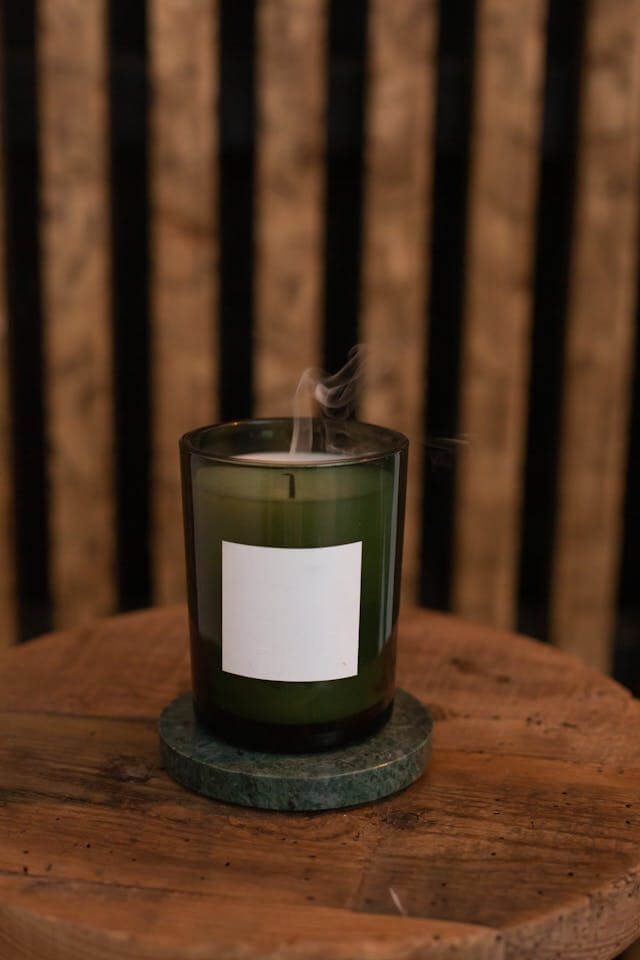
Now, it’s time for the fun part – creating your entire visual brand identity.
Here are the brand assets you’ll need:
- Brand name
- Brand logo
- Brand colors
- Typography
- Slogan or tagline
- Brand story
- Jar or holder design
- Packaging design
- Candle variety names
Start by defining your brand’s personality. Is it luxurious, eco-friendly, or quirky? This will guide your design choices and messaging.
Next, design a memorable logo. It should be simple yet distinctive, reflecting your brand’s essence. Consider hiring a professional designer to ensure quality.
Your packaging is vital. Build your brand through unique, eye-catching designs that align with your brand identity. Use high-quality materials that protect your candles and enhance their perceived value.
Craft a compelling brand story. Share why you started your business and what makes your candles special. This narrative helps customers connect with your brand on a deeper level.
Develop a consistent color palette and typography for all your branding materials. This creates a cohesive look across your website, packaging, and marketing materials.
Choose a brand voice that resonates with your target audience. Use this voice consistently in all your communications, from product descriptions to social media posts.
Remember, branding isn’t just visual. Consider incorporating signature scents that become synonymous with your brand, creating a multi-sensory experience for customers.
Once you design and develop your branding, use it consistently across all channels.
Step 5: Product Sourcing
When starting your private label candle business, you have two main options for sourcing products: making candles yourself or partnering with wholesale suppliers. Each approach has its own advantages and considerations to weigh.
DIY Candles at Home
Creating candles at home allows you to have full control over the production process. You’ll need to invest in some basic equipment like a wax warmer, silicone molds, and a set of candle-making tools. Start by choosing your wax type – soy, paraffin, or beeswax are popular options.
Next, select fragrance oils and dyes to customize your candles. Experiment with different scent combinations and color options to create unique products. Don’t forget to source high-quality wicks that match your candle size and wax type.
Keep detailed records of your recipes and processes to ensure consistency. As you perfect your technique, you can scale up production by investing in larger equipment like double boilers and pouring pots.
Private Label from Wholesale Candle Suppliers
Partnering with private label candle suppliers can help you scale your business quickly. These manufacturers have the expertise and equipment to produce large quantities of candles to your specifications.
When choosing a supplier, ask about minimum order quantities (MOQ) and lead times. Some may offer lower MOQs for new businesses, allowing you to start small and grow.
Discuss customization options like scents, colors, and packaging to ensure your candles stand out.
Request samples from potential suppliers to assess quality. Consider factors like burn time, scent throw, and overall appearance.
Don’t hesitate to negotiate terms, including pricing and payment schedules, to find the best fit for your business needs.
Step 6: Marketing
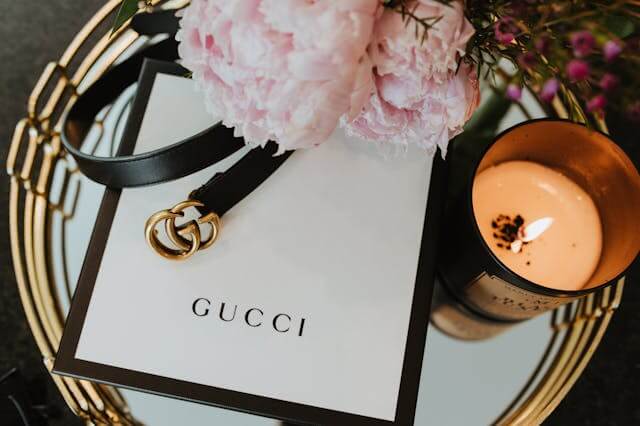
Marketing is crucial for your private label candle business. Start by creating a strong online presence. Set up a professional website and optimize it for search engines to increase visibility.
Social media platforms are powerful tools for candle brands. Establish accounts on Instagram, Facebook, and Pinterest. Post high-quality images of your candles and engage with your followers regularly.
Email marketing can be incredibly effective. Build an email list and send newsletters featuring new products, promotions, and candle care tips.
Consider partnering with influencers in the home decor or lifestyle niches. Their endorsements can significantly boost your brand awareness and sales.
Don’t underestimate the power of customer reviews. Encourage satisfied customers to leave feedback on your website and social media platforms.
Participate in local craft fairs and markets to gain exposure and connect with potential customers face-to-face.
Create a loyalty program to reward repeat customers and encourage word-of-mouth marketing.
Utilize paid advertising on platforms like Google Ads and Facebook Ads to reach a wider audience. Start with a small budget and adjust based on performance.
Remember, consistency is key in marketing. Develop a content calendar to ensure regular posting and engagement across all your marketing channels.
Step 7: Scaling
Once your private label candle business starts gaining traction, it’s time to think about scaling. You can begin by analyzing your sales data to identify your best-selling products and customer preferences.
Expand your product line by introducing new scents, designs, or candle types. Consider seasonal collections or limited-edition releases to keep your customers excited and engaged.
Explore wholesale opportunities to increase your reach. Reach out to local boutiques, gift shops, or spas that align with your brand. Offering bulk discounts can entice retailers to stock your candles.
Invest in automation to streamline your production process. Automated pouring machines can help you produce up to 1,000 candles per day, compared to 100-200 by hand.
Boost your online presence by optimizing your e-commerce store. Implement SEO strategies to improve visibility and consider expanding to multiple sales channels like Amazon or Etsy.
Scale your marketing efforts by increasing your advertising budget. Focus on channels that have proven effective for your business, such as social media ads or influencer partnerships.
Consider outsourcing non-core tasks like packaging or customer service. This allows you to focus on product development and business growth.
Remember, scaling requires careful planning and execution. Monitor your cash flow closely and be prepared to reinvest profits into your growing business.
How to Find Private Label Candle Manufacturers?
Finding reliable private label candle manufacturers is crucial for your business success. You’ll need to explore various channels to discover the best partners for your venture.
Search Google
Start your search by using specific keywords like “private label candle manufacturers” or “custom candle suppliers” on Google.
Use location-based terms to find local or international options. Utilize Google’s advanced search features to refine results. Filter by date to find recently updated information.
Look for manufacturer websites that offer detailed product catalogs and customization options. Check if they provide minimum order quantities (MOQs) that suit your needs.
Some manufacturers may offer dropship candles private label services, which can be beneficial for new businesses.
Pay attention to manufacturers’ certifications and quality standards. Search for reviews and testimonials from other businesses to gauge reliability.
B2B Marketplaces
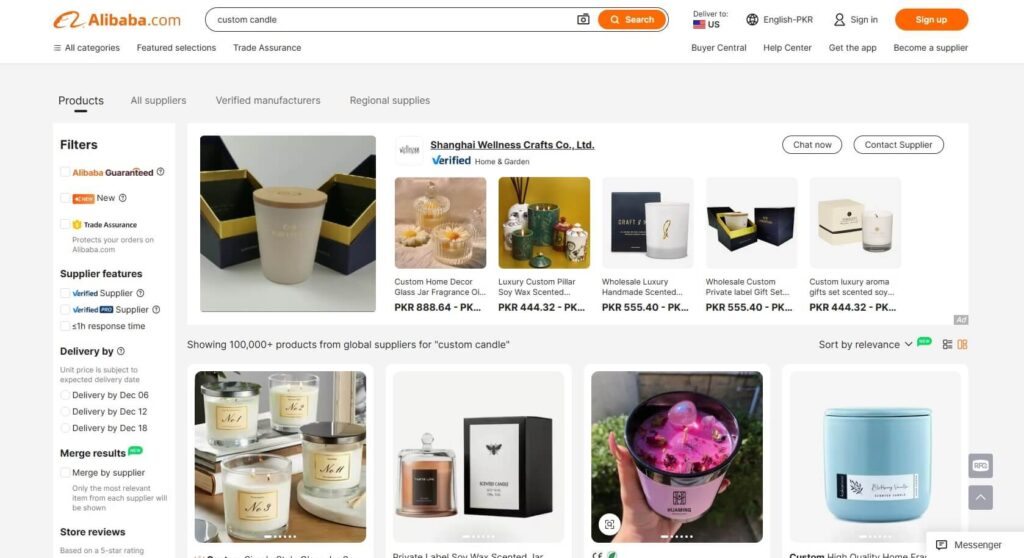
B2B marketplaces are excellent platforms to connect with numerous candle manufacturers. Alibaba, Made-in-China, and Global Sources are popular options. These platforms often have verified supplier programs, giving you added security.
Create an account and search for “private label candles” or specific types like “soy wax candles.” Use filters to narrow down results based on price range, minimum order quantities, and shipping options.
Contact multiple suppliers to compare prices, quality, and terms. Request samples before placing large orders. Be cautious of deals that seem too good to be true.
Product Sourcing Agent
Hiring a product sourcing agent can save you time and potentially money in the long run. These professionals have established relationships with manufacturers and understand the intricacies of international trade.
A good sourcing agent will help you find reputable manufacturers, negotiate prices, and ensure quality control. They can also assist with logistics and customs procedures.
When choosing an agent, look for someone with experience in the candle industry. Ask for references and their success rate with previous clients. Discuss their fee structure upfront to avoid surprises.
Tips for a Successful Candle Business

1. Take Amazing Product Photos to Showcase Your Candles.
Clear, well-lit images highlighting the shape and label will entice customers to buy.
2. Focus on Creating a Strong Brand Identity.
Your candle labels should reflect your unique style. Include essential information like your company name, website, ingredients, weight, and scent.
3. Quality Control Is Crucial.
Test your candles thoroughly before selling to ensure consistent burn times and scent throw. This attention to detail will lead to positive reviews and repeat customers.
4. Build Strong Relationships with Reliable Candle Manufacturers.
Choose partners who can consistently deliver high-quality products and meet your production needs as you scale.
5. Optimize Your Shipping Strategy.
Consider offering free shipping thresholds to encourage larger orders. Use sturdy packaging to prevent breakage during transit.
To make this economically viable, partner with a reliable freight forwarding service that offers competitive rates for bulk shipments.
6. Expand Your Product Line Strategically.

Once you’ve established your core offerings, add more candle varieties based on customer feedback and market trends.
7. Stay Compliant with Regulations.
Obtain an EIN (Employer Identification Number) and register your business properly to operate legally and open a business bank account.
8. Invest in Marketing.
Use social media, email campaigns, and influencer partnerships to reach your target audience and build brand awareness.
Frequently Asked Questions
Starting a private label candle business involves many considerations. Let’s address some common queries to help you navigate this exciting venture.
Is Starting a Candle Business Profitable?
Yes, a candle business can be quite profitable. Profit margins typically range from 25% to 50%, depending on your product positioning and target market.
High-end, luxury candles often command higher profit margins. Niche markets, such as organic or vegan candles, can also boost profitability.
Your choice of sales channels impacts profitability too. Direct-to-consumer sales through your own website or farmers markets often yield higher margins than wholesale.
What Are the Legal Requirements for Selling Homemade Candles?
Selling homemade candles requires adherence to specific legal standards. You’ll need to properly label your products with ingredients, warnings, and usage instructions.
Safety standards are crucial. Your candles must meet fire safety regulations set by organizations like the National Candle Association.
Business insurance is essential. It protects you from potential liability if a customer experiences issues with your product.
Registering your business and obtaining an EIN are necessary steps for tax purposes and legal operation.
How Much Does It Cost to Start a Candle Business?
Initial costs for a candle business can vary widely. A basic setup might cost $1,000 to $5,000.
Major expenses include wax, fragrances, wicks, and containers. Don’t forget about packaging materials and labels.
Equipment costs depend on your production scale. A double boiler, thermometer, and pouring pot are essentials.
Marketing expenses, website development, and business registration fees should also factor into your budget.
How Can I Make My Candle Business Unique?
Here are some tips to stand out from your competition and get noticed:
- Find a niche in demand
- Think outside of the box
- Create themed candles (Halloween, birthdays, weddings, TV shows, movies, etc.)
- Sell surprise gift candles (candles with hidden gems, stones, rings, or tiny gifts inside)
- Sell luxury, minimalistic, high-end candles
- Leverage sustainability and sell eco-friendly candles
- Sell visually appealing candles
- A great brand design (a memorable logo, tagline, a clean product, and package design)
- Choose a unique candle holder (instead of a jar, try a metal tin or candle bowl)
- Mix unusual fragrances and give them catchy names
Can I Find a Private Label Candle Supplier in China?
Of course. China is a hub for candle manufacturers who offer private label services. So, there’s an abundance of private label suppliers to choose from.
On top of that, sourcing from China will give you the best profit margins when you resell.
If you’re interested in sourcing private label candles from China, let us know and get your free quote. We’re a leading product sourcing agent and we’ve helped thousands of resellers like you buy high-quality private label products from China.
Wrapping Up: Insights on Starting a Private Label Candle Business
Starting a private label candle business can be an exciting and rewarding venture.
You’ve learned about sourcing materials, designing packaging, and partnering with manufacturers. Remember to focus on quality and uniqueness to stand out in the market.
Consider exploring dropship candles private label options to minimize upfront costs and inventory risks. This approach allows you to test different products and scale your business gradually.
Keep in mind that success in the candle industry requires attention to detail, creativity, and a strong brand identity. Stay updated on market trends and customer preferences to keep your offerings fresh and appealing.
Take the next step in your entrepreneurial journey by requesting a sourcing quote from us at NicheSources for your private label candles.
With the right strategy and resources, you can build a thriving candle business that brings warmth and ambiance to homes everywhere.
